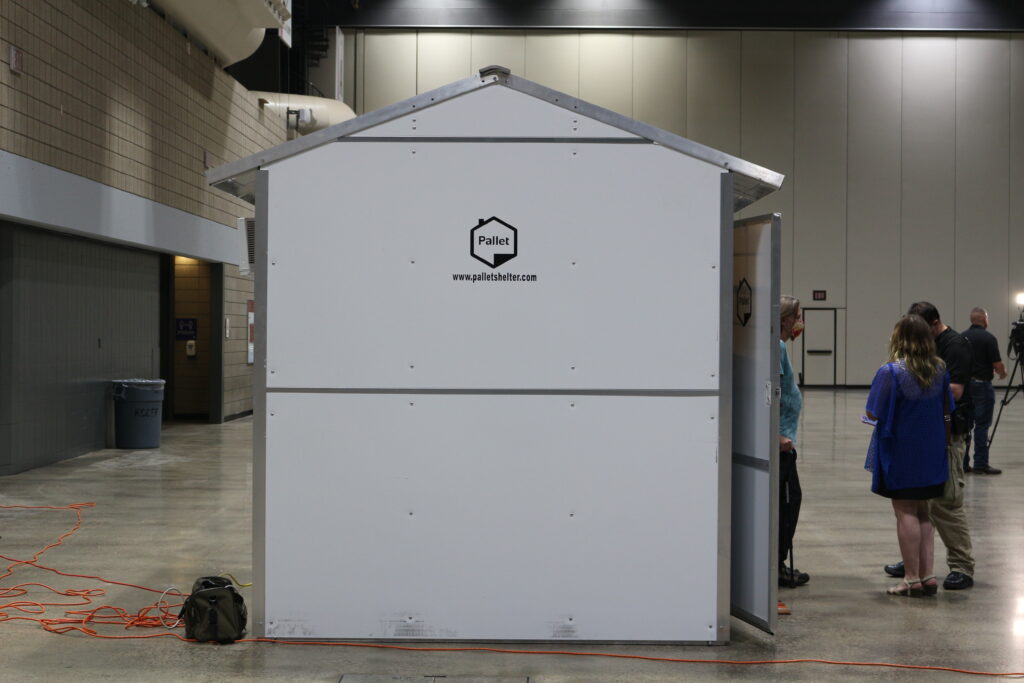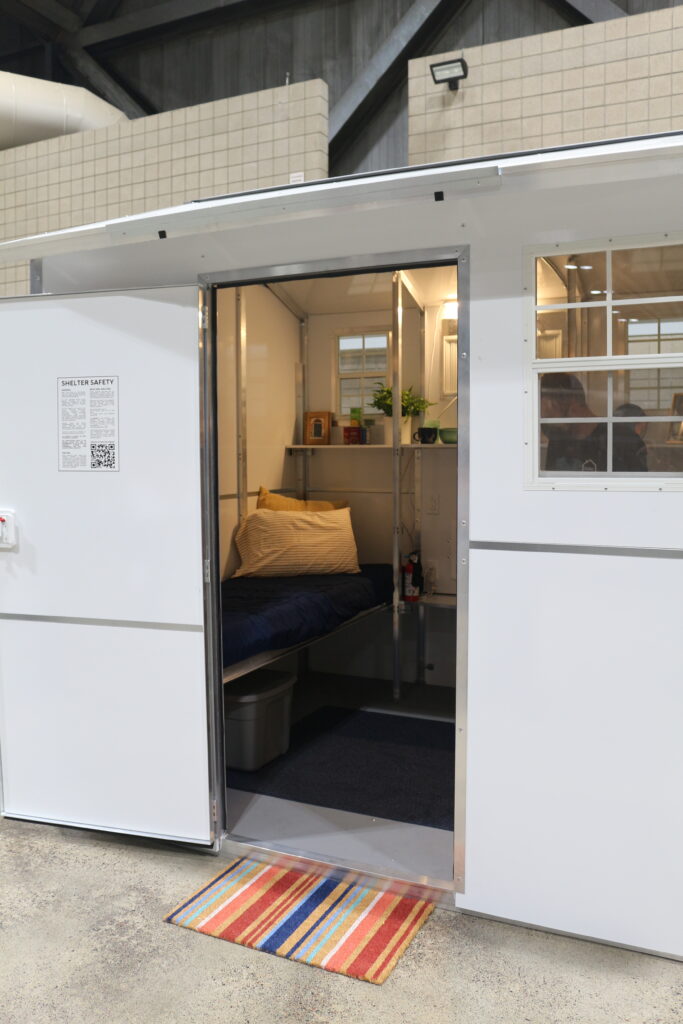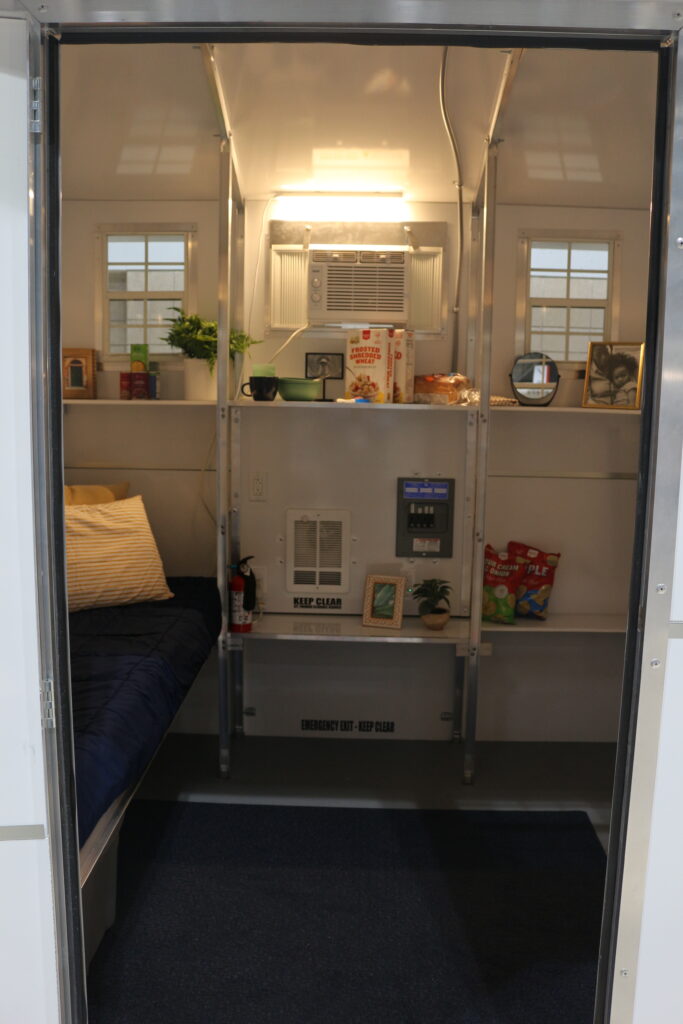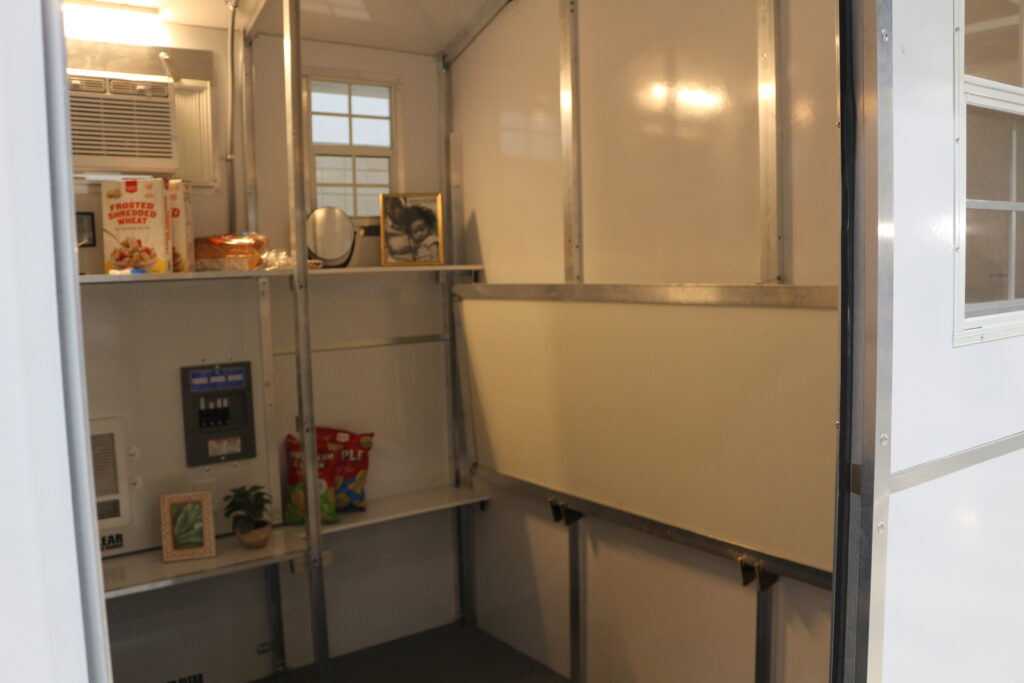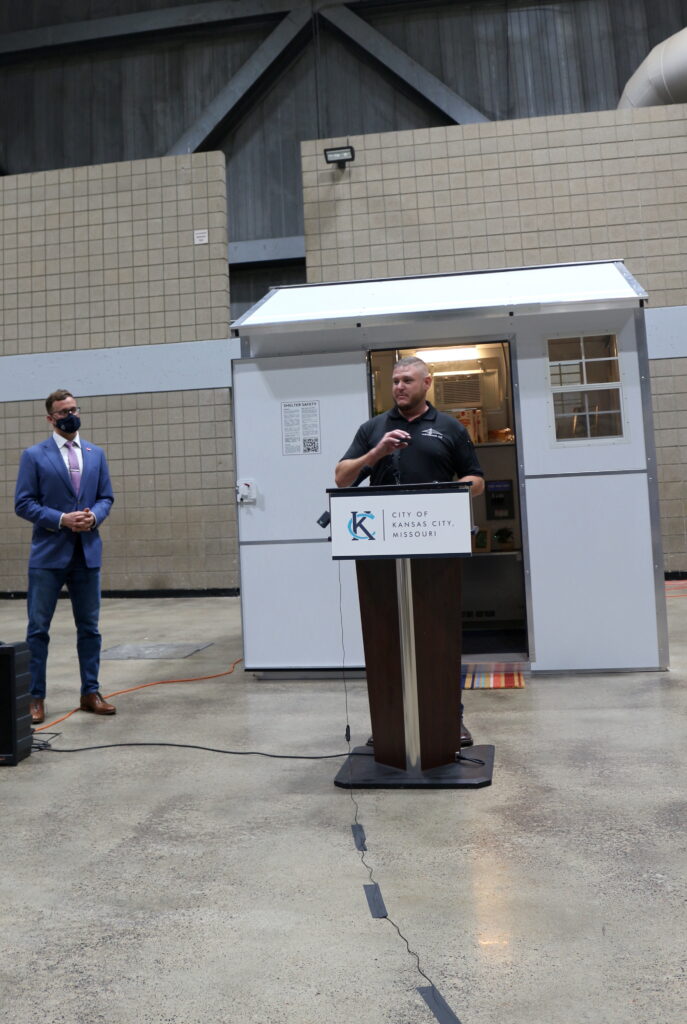
After multiple trips back to the drawing board, Kansas City’s first small shelter community for the unhoused was introduced on April 28.
Merging KC, led by Houston DeFoe, is heading up the project that brings together resources from across the city, including local government, to provide meaningful transitional housing to Kansas City’s homeless population.
No official location has been announced for the community, known as Verge. The community will initially have 60 64-square-foot shelters and five 100-square-foot shelters, bathroom and shower facilities, a community space, and office for the case workers, volunteers and medical staff. They can be assembled anywhere there’s flat ground.
“We’re still finalizing some locations that we’ve been thinking about for where to put this, but it will be a full service neighborhood community,” City Manager Brian Platt said.
Last week, the Kansas City City Council passed a resolution directing the City Manager to look at solutions for homelessness. Currently, the City is housing 350 individuals in a hotel after shutting down camps on the lawn of City Hall and in Westport earlier this month. They may have the option to be among the first to stay at Verge when it is up and running.
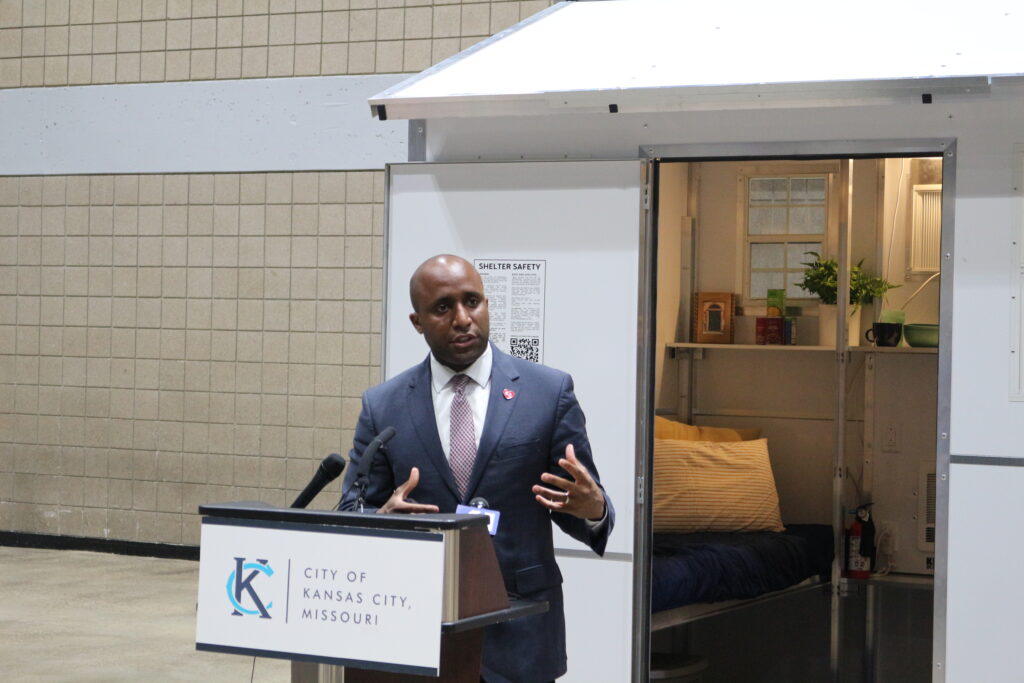
“We can get to a point where everybody in Kansas City has a place to sleep that they can call their own,” Kansas City Mayor Quinton Lucas said. “This is one of Kansas City’s many steps in the area of housing.”
Housing is a core solution for so many things in Kansas City – public safety, education, all the things that stem from having a place to start each day, having a place that you can be proud of that you can call your own, Lucas said, adding that this is a unique solution that no other Midwest city has done.
“You see us taking bold steps, transformative ones, to make sure that we are building models for where people can transition to permanent housing, ultimately be able to pick themselves back up, get back on their feet, lift their families back up,” Lucas said.
There will be growing pains while these programs are rolled out, working with the housing authority who sees thousands of Kansas Citians on its waiting list each day.
“Kansas City is not looking the other way anymore,” Lucas said. “No matter where you are in housing insecurity – if you’re somebody who’s having trouble making rent, if you’re somebody dealing with an abusive landlord, if you’re somebody who doesn’t have a permanent place to stay – we are there for you,” Lucas said.
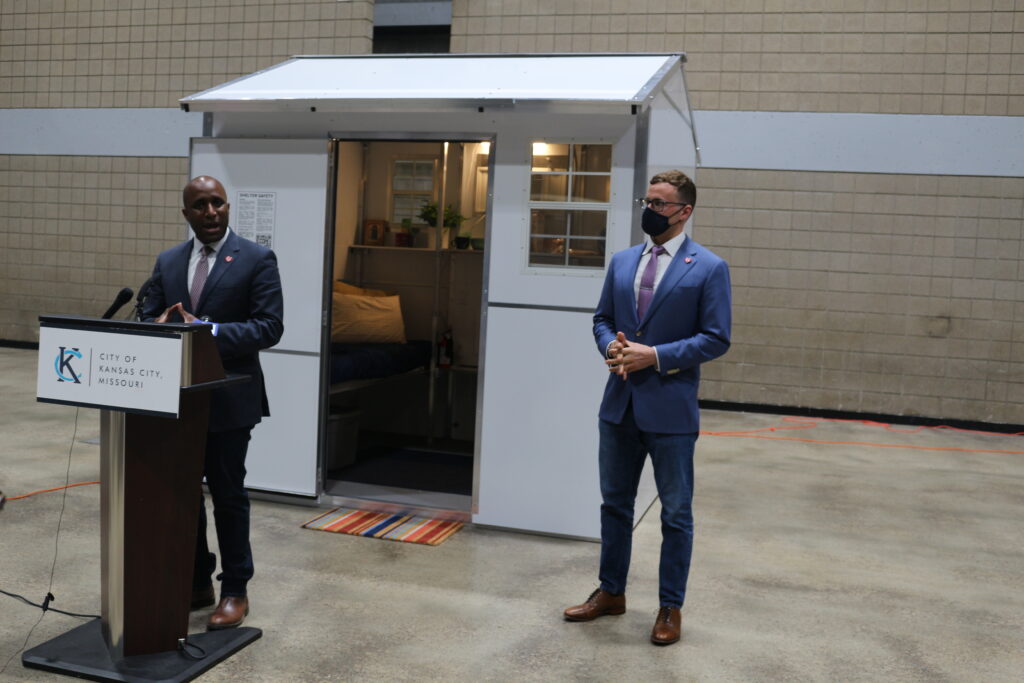
City Manager Brian Platt called Verge one of the innovative solutions the City is pursuing to fill an urgent and immediate gap of hundreds of people living on the streets.
“This is one of the ways that we’re going to find a place for anyone and everyone who is houseless to get off the streets immediately and quickly,” Platt said. “This is an independent, safe, respectful and private home for people to live in as long as they need.”
Platt said they’re looking at solutions like this because of the hundreds of people living on the streets in Kansas City and thousands in the metro area, which is not new, but has been exacerbated by the pandemic.
“We have 170 tent encampments across the city,” Platt said. “That’s a lot of people that are living in substandard conditions and unsanitary conditions and we are going to provide those for people, for as long as they need for as many people as might need them.”

Referencing the Point in Time count conducted in February, Platt said there are an estimated 2,000 unhoused people in Kansas City. He noted that when they opened the Bartle Hall warming center, they were expecting 60 people per night, but went upwards of 300.
The cost of a Pallet shelter is far below that of alternatives, like housing the individuals in hotels, and more financially sustainable for the City long-term, Platt said.
“It is very cost effective, I think one of the things we really latched onto this was that the overall operating costs, year to year, are much lower than having a giant building,” DeFoe said.
Verge will stand out from other area shelters because those staying there will not have to leave the site during certain hours. It will be staffed 24 hours a day by caseworkers and security.
“We have some great shelters here in town that are trying to do a really good job every day, but some of those shelters have to kick people out during the day,” DeFoe said. “This is going to be a 24 hour home for these people… It’s kind of a game changer. A lot of times our houseless friends don’t get to see their caseworkers every day. They just don’t get that kind of support.
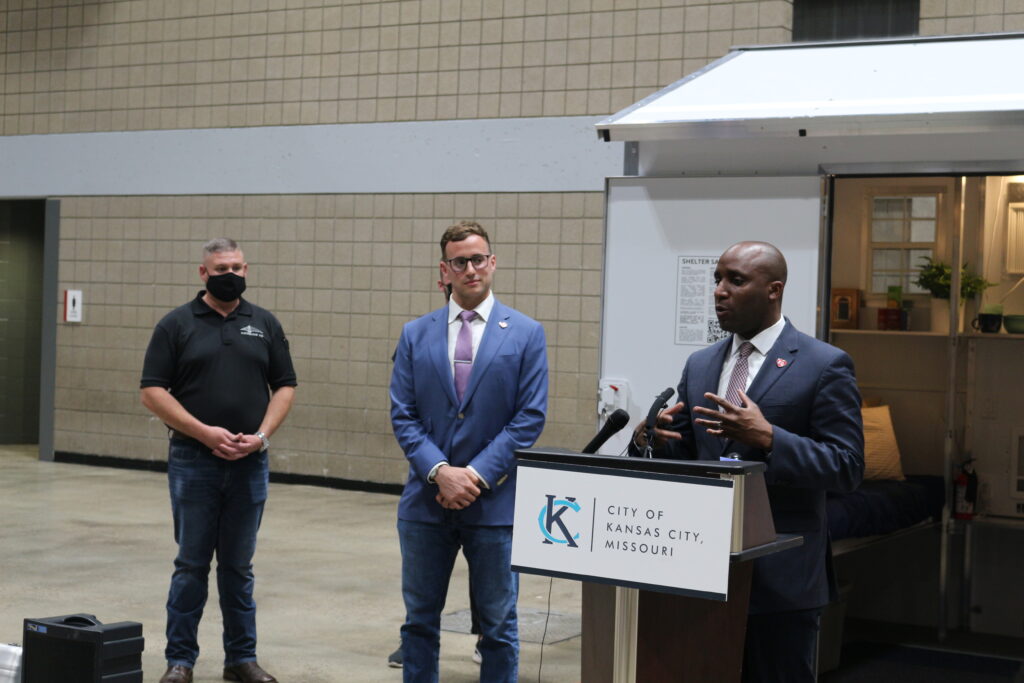
Nonprofits and volunteer groups will have a space to provide meals, resources and services so residents don’t have to travel off site to find them.
“We’re trying to give them a safe environment where they want to work on themselves, start taking some steps forward and doing better in life,” DeFoe said.
Platt estimates the project is on a several weeks timeline, rather than several months, and said there should be more information on a location available next week. He said they are considering City owned properties with about 50,000 square feet of space, and mentioned parks as an option.
A budget proposal will have to go to City Council, and there are discussions around using federal stimulus funds.
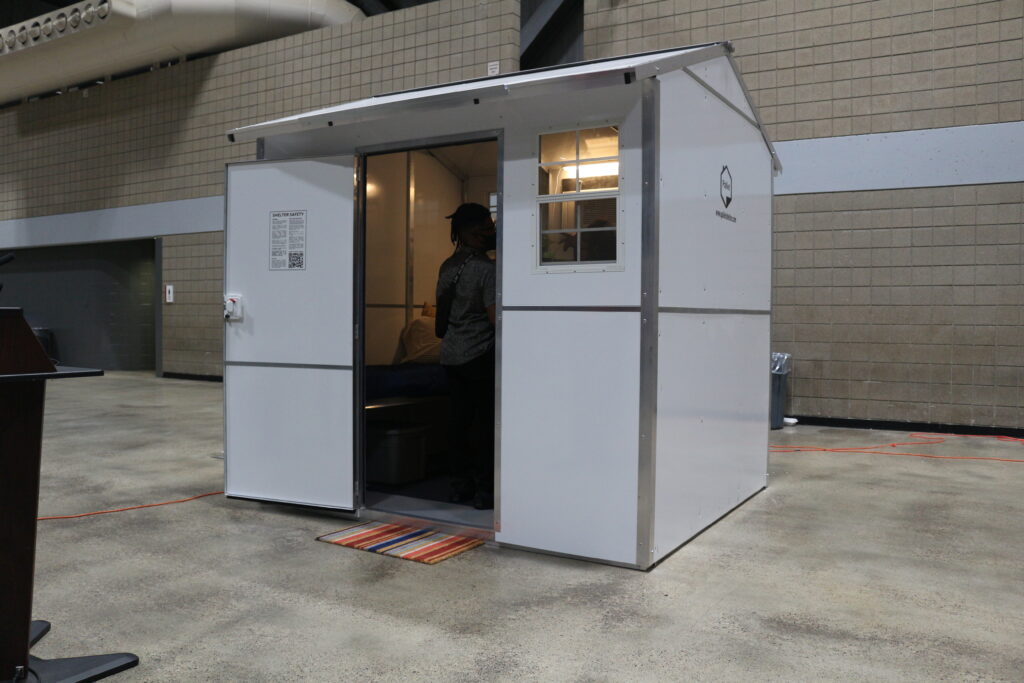
“We’re doing this collaboratively with the houseless community,” Platt said. “They are going to have ownership and responsibility for the site. One of the things that we’re discussing with them already, not just here but at the hotels, is providing job opportunities for that community to help manage and maintain the site, so maybe that means security, maybe it means maintenance, cleaning staff, that sort of thing. There’s going to be a lot of responsibility given there, and of course, there’s going to be rules and regulations.”
When someone is taken out of a park or wherever they are living and they are thrown into long-term housing, they are often not prepared, and some of them have had an unstable housing situation since a young age, DeFoe said.
“They’re not ready mentally, they’re not ready physically, some of them are missing some life skills that you or I may have every day that we clean, we do laundry, we bathe,” DeFoe said. “They lack some classes they may need to help teach them how to live on their own, take care of themselves.”
Verge will “warm them up” and get them ready for the next step, long-term housing. The case workers will follow them through the transition and support them in leading a successful lifestyle.
The 64-square-foot shelters are manufactured by Pallet, a social purpose corporation out of Everett, Wa., a suburb of Seattle.
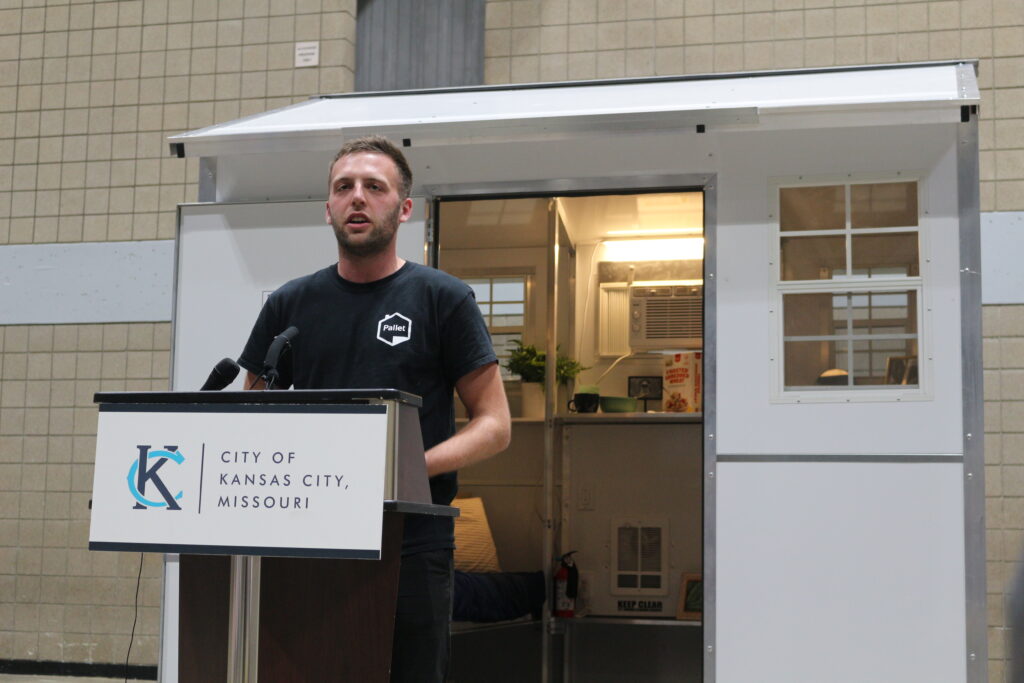
“The real idea behind Pallet is a scalable and repeatable solution to get everyone off the streets, end unsheltered homeless in the United States,” Ben Simons, sales representative with Pallet, said.
Pallet was founded four and a half years ago, and has since expanded its communities to California, Oregon, Texas and Hawaii, and they hope to soon expand to Arkansas, New Jersey, Virginia and additional states. Pallet approaches homelesness as a humanitarian crisis, and thanked Kansas City for doing the same.
“The shelters have gone through dozens of iterations, at this point, of design and this is what we’ve come to,” Simons said. “We have about 35 communities across the country, about 2,000 sheltered beds in place.”
Pallet’s mission includes providing employment opportunities for people with lived experience in homelessness. About 90% of their employees were at one point unhoused.
“Obviously a vast amount of the design of the units, what’s included, what’s not included, comes from their experience,” Simons said. “COVID really paved the way for people to look at this as a solution because they had to find a method to provide a safe place for people to call home on a temporary basis that allowed for social distancing.”
The average stay in a Pallet shelter community is 60 to 90 days. The communities have communal facilities, similar to a college dorm, for bathrooms, laundry and a kitchen. Pallet also manufactures community centers that are 400 and 800-square-foot structures.
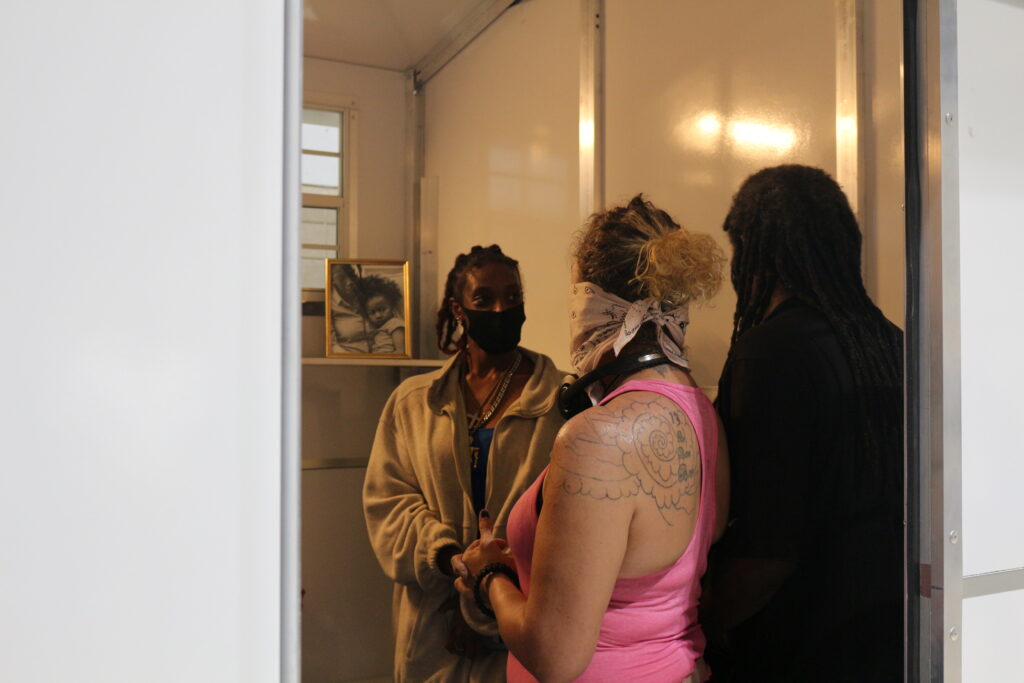
“The real idea is to get people off the streets, get people out of tents or out of their cars, and into a place where they have a locking door, where they have windows, where they can stabilize, feel safe and leave their belongings in there during the day so they can go out and apply for jobs and access services without worrying about all their belongings being gone,” Simons said.
The shelters take about 45 minutes to assemble, and can be broken down and reassembled multiple times, or moved with a forklift. Each shelter is shipped on a pallet in seven panel pieces. Because of this, if one piece gets broken, it can easily be replaced.
“When it comes to getting community support, you don’t necessarily have to say, ‘Hey, this is a permanent building that’s going to be here for centuries,’ you can just say, ‘We’re going to try this out for a year and go from there,’” Simons said.
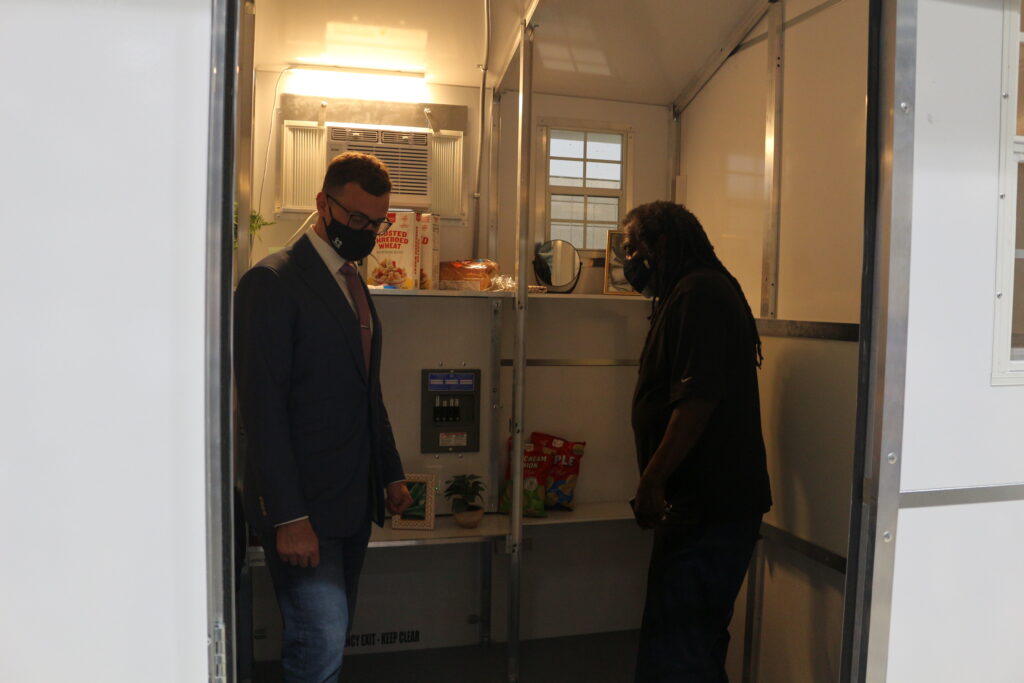
Pallet shelters are built out of mold, rust, mildew and pest resistant material, and can withstand up to 120 mph winds. They are also compatible with heat and air conditioning units, have a second bunk that can be converted into a desk, are equipped with safety measures like an emergency exit hatch, hardwired smoke and carbon monoxide detectors, and a fire extinguisher. The shelters are made withstand washing and sanitizing between residents.
Inside each unit, individuals will be provided with a mattress, sheets, pillows, and a care basket with toiletries and other necessities. They also will have a storage container under the bed to keep personal items.
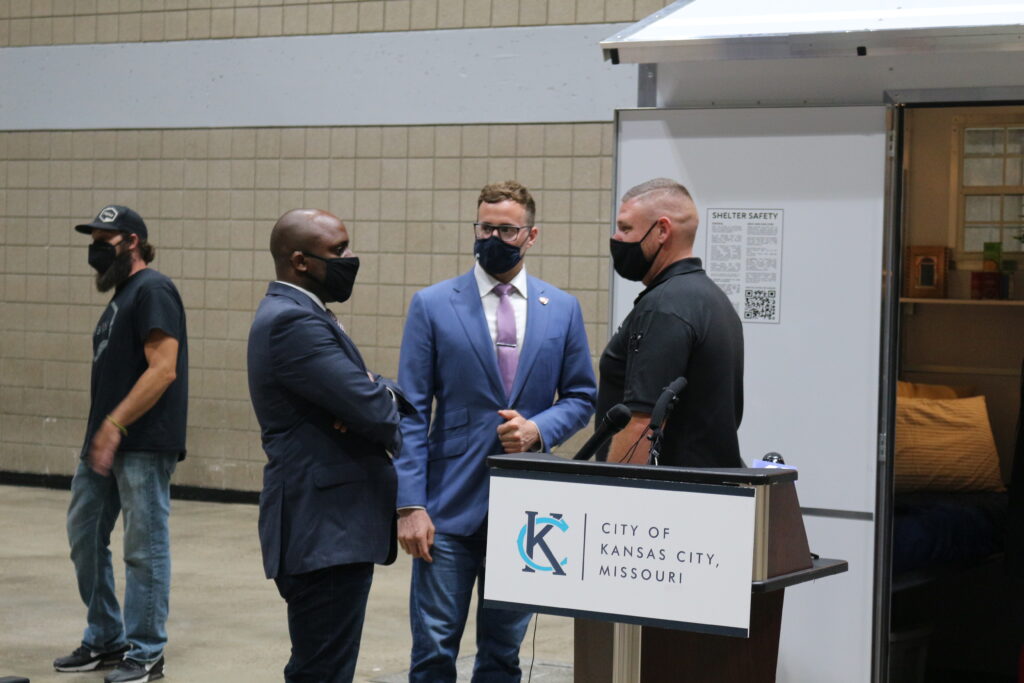
More information on Verge will be released next week. Follow the Northeast News for updates as they become available.


